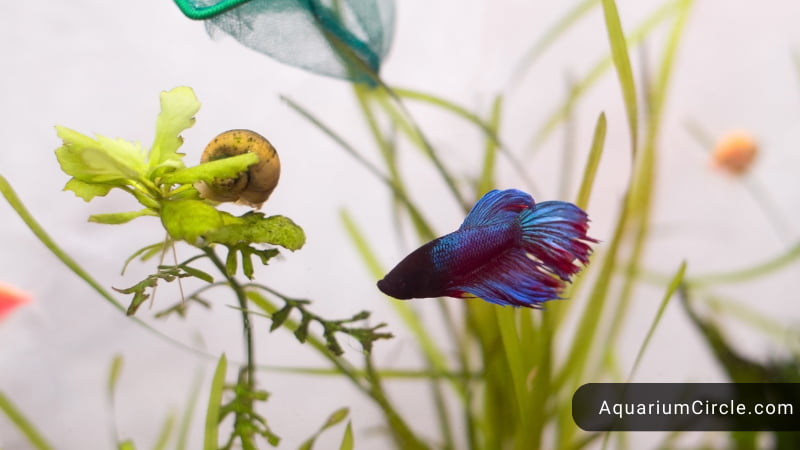Keeping a betta fish can be an enjoyable and rewarding hobby. However, maintaining a healthy and clean environment for your betta can be a challenging task. One solution to this problem is adding snails to your betta tank. Not only do they help control algae growth and clean up uneaten food and waste, but they can also provide a natural food source for bettas and add visual interest to the tank.
In this blog post, we will explore the benefits of adding snails to a betta tank, the best snails for betta tanks, how to add snails to your tank, potential problems to look out for, and more. Whether you’re a beginner or an experienced fishkeeper, this post will provide valuable information on how to incorporate snails into your betta tank and improve the overall health and aesthetics of your aquarium.
See also:
- Can Male And Female Betta Fish Live Together? How Can You Put A Male And Female Betta Fish Together Peacefully?
- Can Female Betta Fish Live Together? Can We Put Two Female Bettas In A Tank?
- Top 3 Most Crucial Things To Know Before Getting A Multiple Betta Fish Tank
Benefits Of Keeping Snails For Betta Tank
First of all, let’s keep reading to see the benefits you and your bettas will gain when keeping snails in a betta tank. Adding snails to your betta tank can offer numerous benefits to both the snails and your betta fish. Here are some of the key benefits:
Control algae growing
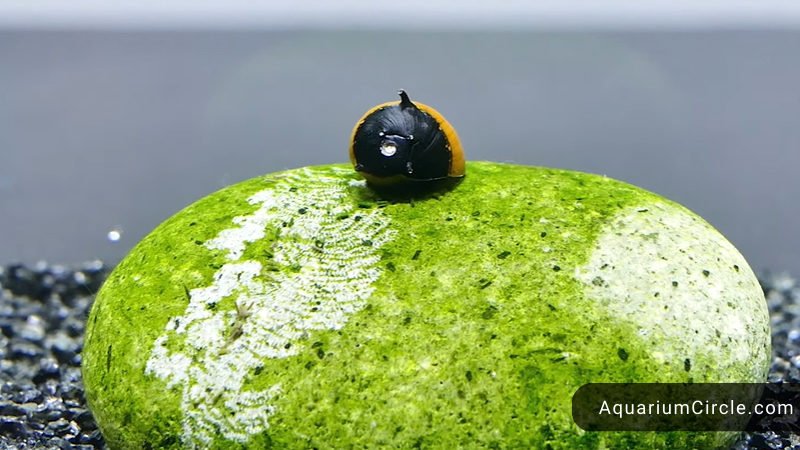
Controlling algae growth is one of the most important benefits of adding snails to a betta tank. Algae growth can be a common problem in aquariums and can be difficult to manage. Too much algae growth can not only be unsightly, but it can also have a negative impact on the water quality in your betta tank.
Certain snail like nerite snails and mystery snails, are particularly effective at controlling algae growth in betta tanks. These snails are known for their voracious appetite for algae and can help to keep your tank clean and healthy. They will graze on algae that grows on surfaces such as glass, decorations, and plants, which can help to keep the tank free of unsightly algae.
One of the benefits of using snails to control algae growth is that they provide a natural and eco-friendly solution. Unlike chemical treatments, snails do not introduce harmful chemicals or toxins into your betta tank. They are also much easier to maintain than other forms of algae control, such as frequent water changes or manually scrubbing the tank.
It’s important to note that while snails can be effective at controlling algae growth, they are not a complete solution on their own. Other factors, such as lighting and water parameters, can also impact algae growth. It’s important to maintain a balanced and healthy environment in your betta tank to prevent algae problem.
Clean up uneaten food and waste
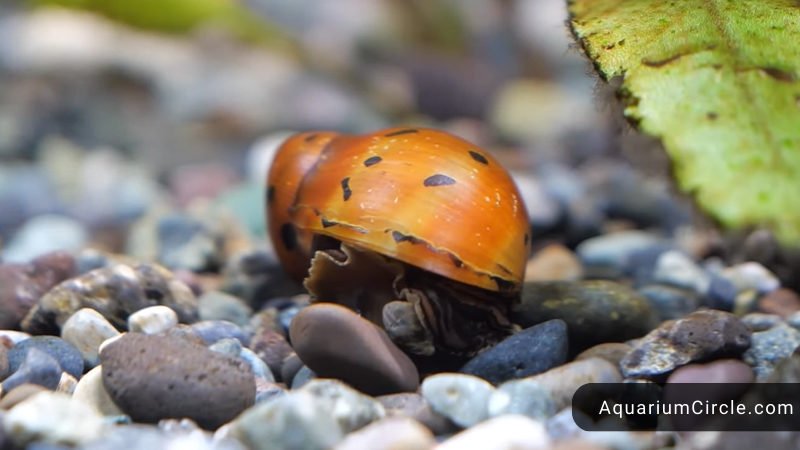
Snails are natural scavengers and are known for their ability to clean up uneaten food and waste in aquariums, including betta tanks. Uneaten food and waste can contribute to poor water quality in the tank, which can negatively impact the health of your betta fish.
Snails are particularly effective at cleaning up uneaten food and waste that may be missed during feeding. They will scavenge for food particles and other debris on the bottom of the tank, which helps to prevent the build-up of waste. Snails are also known for their ability to consume organic matter, which can help to reduce the levels of ammonia and nitrite in the tank.
In addition to cleaning up uneaten food and waste, snails can also help to prevent the growth of harmful bacteria in the tank. As they consume organic matter, they help to break it down into smaller particles that can be more easily processed by beneficial bacteria in the tank. This helps to maintain a healthy and balanced ecosystem in the betta tank.
One important thing to keep in mind when adding snails to your betta tank is that they can also contribute to waste production. As they consume food and produce waste, they add to the overall bioload in the tank. It’s important to maintain a proper balance of snails and other tank inhabitants to prevent overloading the tank with waste.
Help with the nitrogen cycle
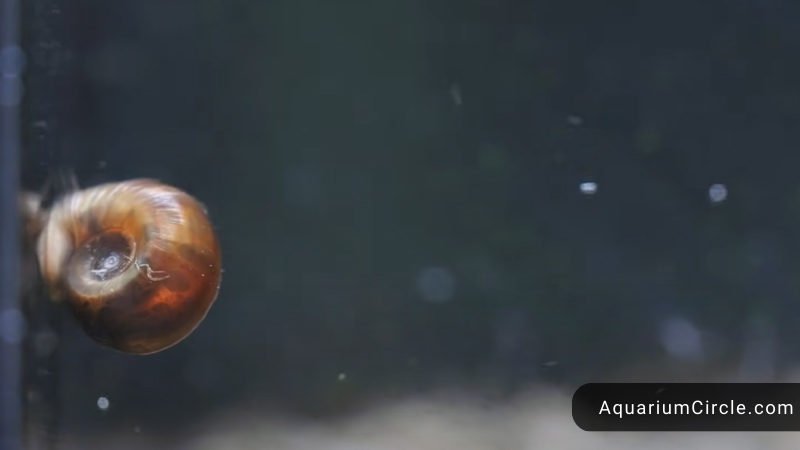
Snails are a valuable addition to betta tanks because they can help with the nitrogen cycle, which is an essential process for maintaining a healthy aquarium ecosystem. The nitrogen cycle involves the conversion of harmful ammonia and nitrite into less harmful nitrate, which can be removed through regular water changes.
Snails can help with the nitrogen cycle in several ways. First, they consume excess nutrients and organic matter in the tank, which can help to reduce the levels of ammonia and nitrite. As they consume this waste, they help to prevent the build-up of harmful toxins in the tank.
Second, snails produce waste themselves, which can provide a source of ammonia for beneficial bacteria to consume. This can help to establish and maintain a healthy colony of beneficial bacteria in the tank, which are essential for converting ammonia and nitrite into nitrate.
In addition to helping with the nitrogen cycle, snails can also help to prevent the accumulation of waste and debris in the tank. This can help to maintain a healthy and balanced ecosystem, which is essential for the well-being of your betta fish.
It’s important to note that while snails can help with the nitrogen cycle, they are not a complete solution on their own. Other factors, such as maintaining proper water parameters and performing regular water changes, are also essential for maintaining a healthy aquarium ecosystem.
Provide a natural food source for bettas
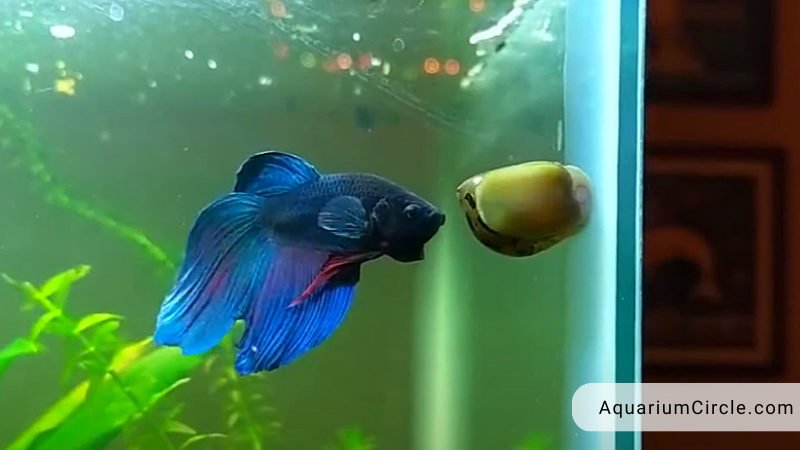
Snails can also provide a natural food source for bettas. In their natural habitat, bettas are known to feed on small invertebrates, including snails. While bettas are primarily carnivorous and require a diet rich in protein, they will occasionally eat small amounts of plant matter and other organisms.
Snails can be a valuable addition to a betta’s diet because they are a natural and nutritious food source. Some snail species, such as ramshorn snails and pond snails, are small enough to be eaten whole by bettas. Other snail species, such as mystery snails, are too large to be eaten whole but can still provide a source of protein for bettas.
It’s important to note that while snails can provide a natural food source for bettas, they should not be relied upon as the sole source of nutrition. Bettas require a diet that is high in protein and should be fed a variety of foods, including pellets, frozen or live foods, and occasional treats such as bloodworms or brine shrimp.
In addition to providing a natural food source, snails can also help to stimulate betta’s natural hunting behavior. Bettas are known for their aggression and territorial behavior, and adding snails to the tank can provide a source of stimulation and activity for them.
Add visual interest to the tank
In addition to their functional benefits, snails can also add visual interest to a betta tank. With their unique shapes, colors, and patterns, snails can add a pop of color and texture to the aquarium.
There are many different species of snails that can be added to a betta tank, each with their own distinct appearance. Some popular species of snails for aquariums include mystery snails, nerite snails, and ramshorn snails. These snails come in a range of colors and patterns, from bright yellow and orange to deep blue and black.
Adding snails to a betta tank can also create a more natural and dynamic environment. Snails can move around the tank and interact with other inhabitants, such as plants and other fish. Watching the snails go about their business can be a fascinating and calming experience for both you and your betta.
What Are The Best Snails For Bettas You Can Keep As Tank Mates
If you are looking for compatible tank mates for your betta, snails are a great choice. There are so many different types of snails but here are the bests snail we recommend for you:
Mystery snails
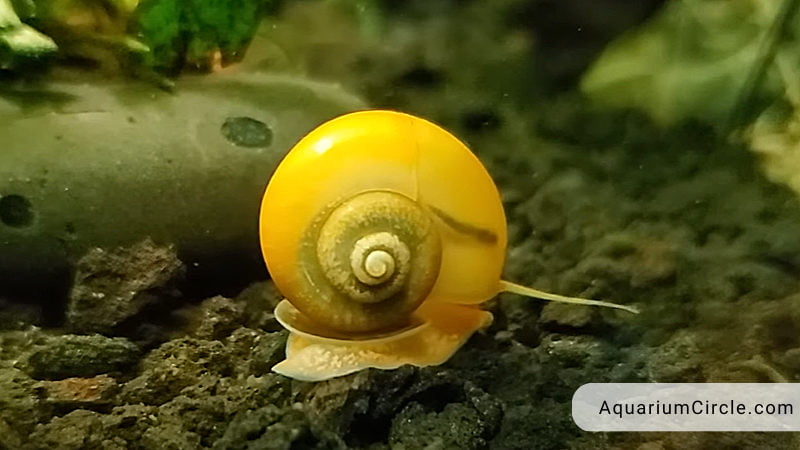
Mystery snails and bettas make great tank mates due to their compatibility and functionality. These snails come in a variety of colors and are visually pleasing, making them an attractive addition to a betta tank. They also help control algae growth, which reduces the need for manual cleaning and keeps the water quality high.
The sleeping and waking cycles of mystery snails and bettas are also similar, making them ideal companions. Snails tend to be more active after eating, which can add an element of interest to the tank. Additionally, these snails are easy to care for and do not take up much space, as they only grow up to two inches in size. However, due to the bio load they produce, their tanks should be at least 10 to 15 gallons.
It’s important to note that if you plan on keeping a mystery snail, you should consider having a closely monitored tank setup as they can wander out of their shells. Fortunately, the similar water conditions required for bettas and mystery snails make it easy to set the right parameters for the tank.
Nerite snails
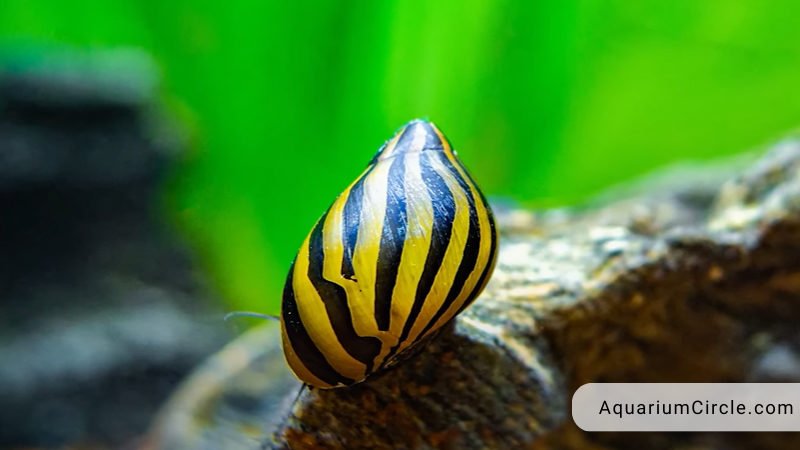
Nerite snails are another type of snail that can be suitable for betta tanks. They are a popular choice because they are efficient algae eaters and can help control algae growth in the tank. They also come in a variety of colors and patterns, adding visual interest to the tank.
One unique characteristic of Nerite snails is that they are unable to reproduce in freshwater tanks, making them a great option for those who don’t want to deal with an overpopulation of snails in their tank. However, they still require proper care and maintenance to thrive in the tank.
Nerite snails are generally peaceful and won’t bother other tank inhabitants, including bettas. They are also hardy and can tolerate a range of water parameters, making them a good choice for beginner aquarists.
However, Nerite snails do have a tendency to climb out of the water, so it’s important to have a tight-fitting lid on the tank to prevent them from escaping. Additionally, their shells can be quite hard, so it’s important to ensure that the tank decor and substrate are not too abrasive and won’t damage their shells.
Assassin snails
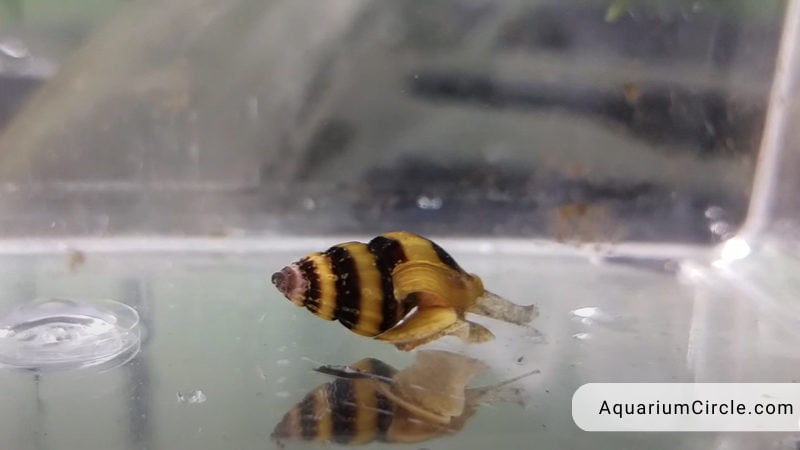
If you want to control the snail population in your tank, assassin snails can be a great option. These snails are carnivorous and can effectively eliminate other snails. However, you need to be cautious when introducing them to your tank, as they may also prey on shrimp, fish, and other small invertebrates.
Additionally, keep in mind that assassin snails are larger than nerite snails and mystery snails. They can grow to the size of a ping-pong ball, which means you’ll need a larger tank to accommodate them. Before adding them to your aquarium, be sure to do your research and ensure they are the right choice for your tank and other inhabitants.
Ramshorn snails
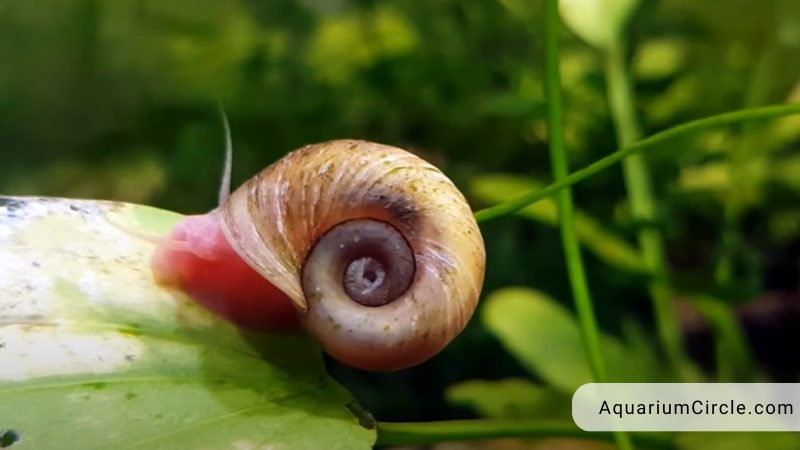
It is important to keep in mind that Ramshorn snails are relatively small in size and have a lifespan of about a year. However, they can reproduce very quickly, especially when well-fed. These snails lay small, clear eggs all over the tank, which can be difficult to spot with the naked eye. To prevent a population explosion, it’s crucial to maintain regular tank cleaning and upkeep.
Ramshorn snails come in a variety of colors, including red, olive, pink, yellow, blue, and brown. Two common variants found in aquariums are the Red Ramshorn (Planorbella Duryi) and the Great Ramshorn (Planorbarious Corneus). These snails clean the tank of algae, leftover food, and debris, but may also occasionally eat plants in the tank. It’s worth noting that Ramshorn snails have similar water requirements as bettas, making it easier to maintain suitable tank conditions.
Japanese Trapdoor snails
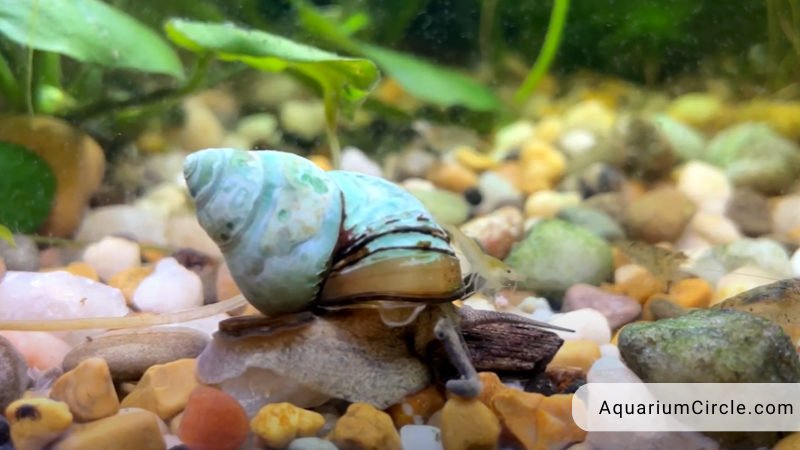
Japanese Trapdoor snails are a popular addition to Betta tanks, not just because of their color and unique shape, but also because they can protect themselves from predators with their operculum, which can close up and shield them during Betta attack. These snails are also known for their ability to quickly detect changes in water parameters, making them ideal tank mates for Bettas.
Japanese Trapdoor snails are unlikely to eat your fish or plants if they are properly fed, and they can feed on the algae that grows in the tank. However, if the algae is insufficient, you can supplement their diet with algae pellets. They come in various colors, including white, green, gold, and dark brown.
These snails do not require a lot of space if their breeding is controlled, as they usually grow to an average size of two inches. A minimum aquarium size of 15 gallons with a closed lid is ideal to prevent them from wandering off. Finally, make sure to cycle your tank properly to maintain the water pH between 7.0 and 8.0 and the water temperature between 64 to 84 degrees Fahrenheit for your betta and snails to thrive in the tank.
Pond snails
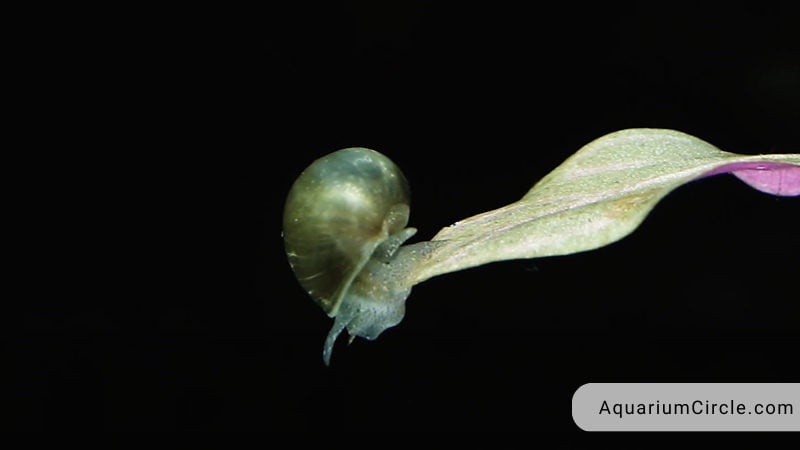
Pond snails are often considered a nuisance in aquariums as they are usually introduced accidentally. However, they are cheap and widely available. Despite their reputation, these snails can be beneficial for your tank as they help in keeping it clean by consuming algae, dead plants, and leftover food.
Moreover, they can be a suitable option for Betta tanks with limited space, such as a 3-gallon tank. Pond snails prefer a water pH range of 7.0 to 7.5 and a temperature range of 70 to 78 degrees Fahrenheit, which is well-suited to the needs of Betta fish. Despite their small size, pond snails reproduce rapidly, so it’s important to monitor their population and maintain regular tank maintenance to avoid overpopulation.
Turret snails
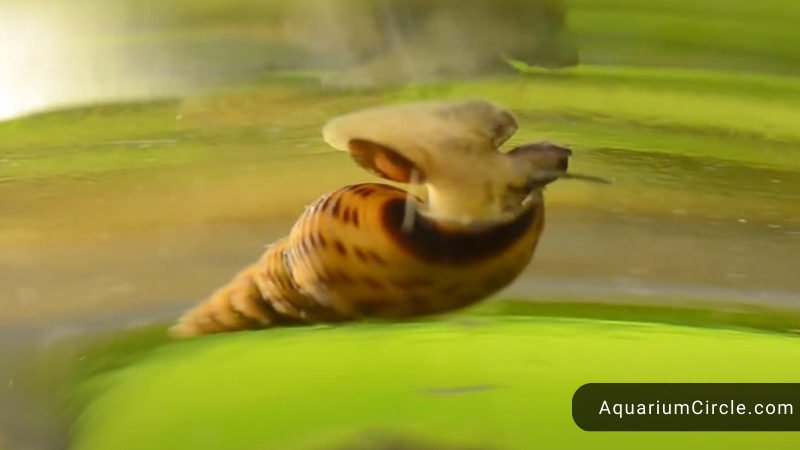
Turret snails, also known as trumpeting snails, are an excellent choice for novice aquarists as they are easy to care for. These snails have a lifespan of about a year and can grow up to one and a half inches. However, they reproduce quickly and can be challenging to get rid of if not adequately controlled.
These snails feed on algae, leftover food, debris, and dead plants in the Betta aquarium. They require a minimum tank size of five to ten gallons and a substrate of smooth gravel as sharp edges can cause injuries during foraging. The ideal water conditions for turret snails are a pH level between 7.0 to 7.5 and a water temperature range of 70 to 78 degrees Fahrenheit.
Ivory snails
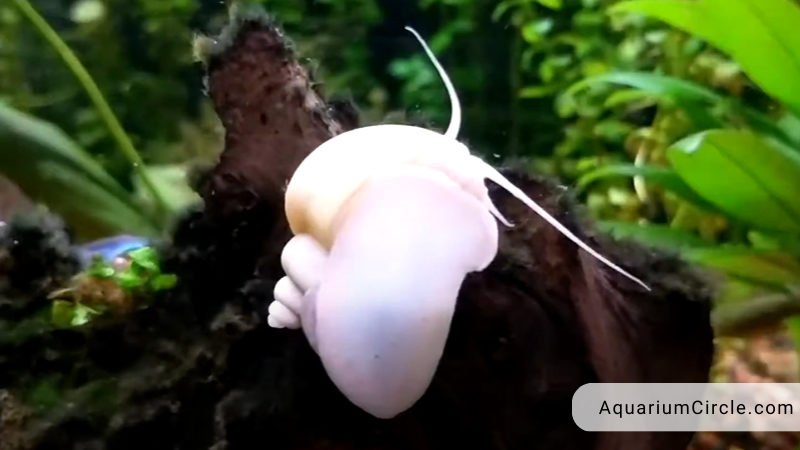
Ivory snails are a freshwater species with whitish shells and bodies that make them a visually appealing addition to your Betta tank. They are very low maintenance and can coexist with Bettas with ease. These snails are nocturnal creatures that become more active during the night, making them an interesting addition to your tank. Ivory snails feed on dead plants, leftover fish food, and soft algae that grow in their tanks.
It is important to note that Ivory snails may sometimes die immediately after being introduced into an aquarium due to pH shock resulting from sudden changes in water parameters. To prevent this, you need to maintain a stable water pH level between 7.2 and 7.5, and a temperature range of 68 to 82 degrees Fahrenheit in your Betta tank.
Rabbit snails
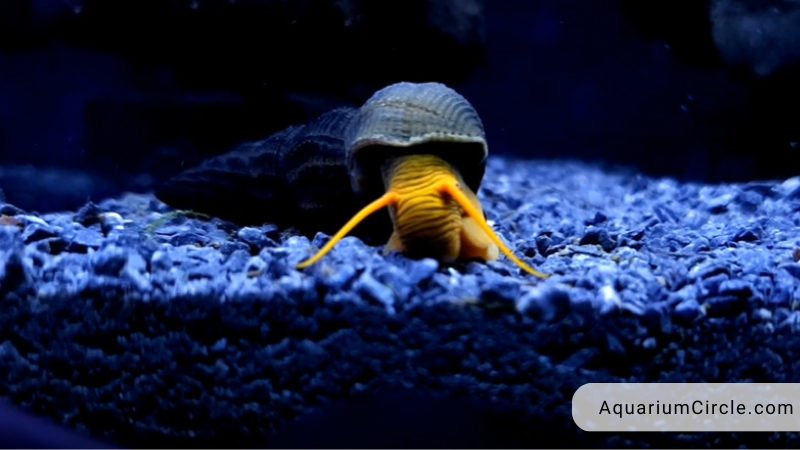
Rabbit snails are a popular choice among hobbyists to keep in the same tank as Betta fish. These snails, which resemble cute rabbits, can grow to an average size of three to five inches, depending on the variant. They add colors like yellow and white to the aquarium and have a lifespan of about three years, making them ideal tankmates for Bettas that also have a similar lifespan.
Rabbit snails feed on detritus, dead plant matter, soft algae, pellets, algae wafers, and live plants. They require a large tank with a capacity of at least 20 gallons as they love to explore. The bigger space they have, the happier they will be.
It’s important to note that rabbit snails thrive in warm conditions with temperatures between 76 and 84 degrees Fahrenheit and need alkaline water to flourish. A pH of 7.8 to 8.4 is adequate. Mixing up some corals into their substrates or filter can help achieve the best water chemistry for them, keeping them happy, thriving, and stress-free in their tank.
Apple snails
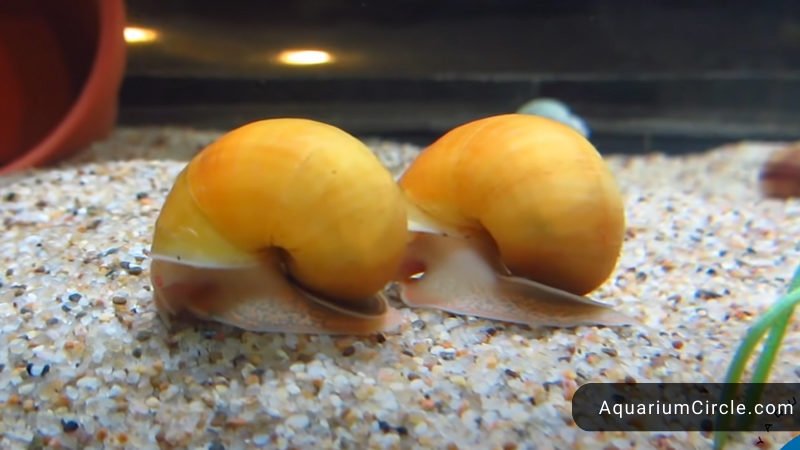
While not typically the first choice for Betta tanks, Apple snails can still be compatible with your Betta. It’s important to note that these snails are sensitive to high nitrate levels, so it’s necessary to keep the aquarium clean. However, Apple snails don’t produce excessive waste, making water maintenance manageable.
Malaysian Trumpet snails
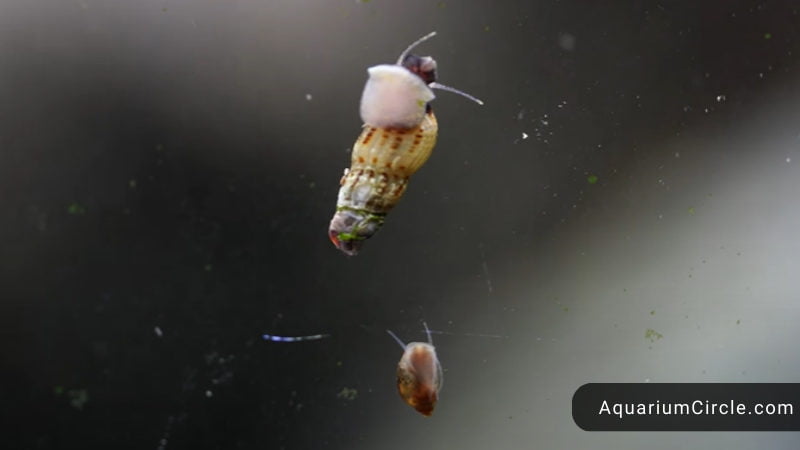
The primary concern with housing these snails in a Betta aquarium is that they have a habit of burying themselves in the substrate and exposing only their heads. This position leaves them vulnerable to potential harm. Additionally, they reach maturity and start reproducing in just two months, which can create issues.
How To Add New Snail To A Betta Fish Tank
Adding snails to a Betta tank requires some preparation to ensure the snails are healthy and the tank environment is suitable for them. Here are the general steps to follow when adding snails to a Betta tank:
- Research the snail species: Before adding snails to your Betta tank, research the snail species to ensure they are compatible with Bettas, and their water and dietary requirements align with your tank environment.
- Acclimate the snails: Acclimation helps the snails adjust to the temperature and water conditions in your Betta tank. Float the snail container in your Betta tank for about 15-20 minutes to allow the water in the container to match the temperature of the Betta tank. Then, gradually add small amounts of Betta tank water to the snail container over 30-45 minutes, before releasing the snails into the tank.
- Monitor the snails: Observe the snails for the first few days after adding them to the Betta tank to ensure they are thriving, eating, and behaving normally. If you notice any issues, take necessary steps to address them.
- Maintain tank cleanliness: Snails produce waste, which can impact the water quality in your Betta tank. Regular water changes and tank maintenance will help keep the tank clean and suitable for both the snails and the Betta fish.
Overall, adding snails to a Betta tank can benefit the tank ecosystem, but it’s crucial to research, acclimate, and monitor the snails to ensure they are healthy and the tank environment is suitable for them.
Potential Issues With Adding Snail To A Betta Aquarium
Although adding snails to a Betta tank can have many benefits, there are also potential problems to be aware of. One of the most significant issues is snail overpopulation. Snails can reproduce quickly, and if the conditions in the tank are right, their numbers can explode. This can lead to too much competition for resources, and the snails may start to die off, creating a mess in the tank.
Another issue is that some species of snails can be aggressive or harmful to other tank inhabitants. For example, some snails may prey on small shrimp or fry, or they may compete with Betta fish for food. Additionally, some species of snails may introduce diseases or parasites to the tank, which can harm the Betta fish or other inhabitants.
Furthermore, some snails can have different water parameter requirements than Betta fish. For instance, some snails may need a higher or lower pH, or they may require different temperatures. This means that adding snails without properly researching their needs could lead to stress, illness, or death.
Lastly, some snails can cause damage to live plants, eating them or digging up the substrate and causing instability. If you have live plants in your Betta tank, it is essential to choose snails that won’t harm them or find ways to protect the plants from snails.
Overall, it is crucial to research and carefully consider the species of snail you want to add to your Betta tank and make sure they are compatible with the Betta fish and other inhabitants. Additionally, it’s important to monitor the tank regularly to avoid potential problems and maintain a healthy and thriving ecosystem.
Video About Snails For Betta Tank
FAQs
Will snails harm my betta?
In general, snails are peaceful creatures that should not harm your betta. However, some larger snail species may accidentally harm bettas if they crawl over them. It’s important to choose snails that are not too large or aggressive for your tank.
Do I need to feed snails in my betta tank?
Yes, you should provide enough food and calcium for your snails to thrive. Snails can help clean up uneaten food and waste, but they still require their own source of nutrition.
Can I add multiple snails to my betta tank?
Yes, but it’s important to monitor the snail population and ensure that the tank is not overpopulated. Overpopulation can lead to water quality issues and competition for food.
How do I acclimate snails to my betta tank?
Slowly introduce snails to your betta tank by floating them in the tank water for a period of time. This will allow them to gradually adjust to the water temperature and chemistry.
Do snails help control algae growth in my betta tank?
Yes, certain snail species like nerite snails and mystery snails can help control algae growth in a betta tank. They will eat algae and other debris, which can help keep the tank clean and healthy.
References

Annette M. Chaney is an experienced marine biologist with over 20 years of experience as an aquarist and fishkeeper. She started her first aquarium at a young age, filling it with frogs and goldfish obtained from the ten-cent pet store.
Annette grew up caring for and breeding African Cichlids, which led to a hobby in high school that doubled as a profitable means. Attending Reed College gave her time to solidify herself as an accomplished aquarium caretaker with an eye for sales. After that, from 2009 – 2013, she studied at Roger Williams University – one of the most prestigious universities for Aquaculture and Aquarium in USA. She is the founder of AquariumCircle since 2010.
